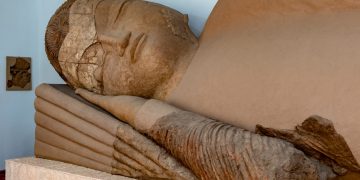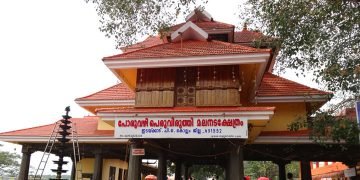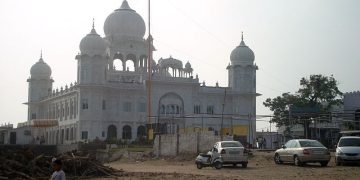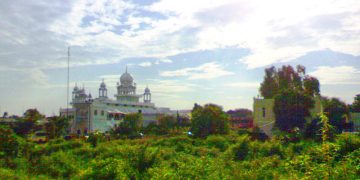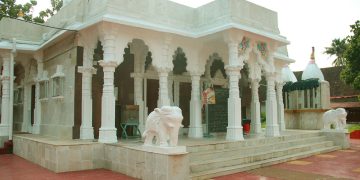The Palitana temples of Jainism are located on Shatrunjaya hill by the city of Palitana. The city of the same name, known previously as Padliptapur, has been dubbed ” the City of Temples”. Shatrunjaya means a “place of victory against inner enemies” or “which conquers inner enemies”
Shrine’s History
According to the Shatrunjaya Mahatmya, the first Tirthankara Rishabha sanctified the hill where he delivered his first sermon. It was his grandson Pundarika, grandson of Rishabha who received salvation at Shatrunjay, hence the hill was originally known as “Pundarikgiri”. Bharata Chakravartin, the father of Pundarik and half-brother of Bahubali, also came to Shatrunjaya many times. He is also credited with building a temple here in honour of his father Rishabha. Legendarily it is also associated with many other Tirthankaras. The Palitana temples were built over a period of 900 years starting in the 11th century. Kumarpal Solanki, a great Jain patron, probably built the earliest temples.[citation needed]It is said that sculptors’ skills and capacity to carve with abrasive cords the intricate designs was paid on the basis of the marble dust that they had collected every evening after their hard labour. They were destroyed by Turkish Muslims invaders in 1311 AD, when the saint Jinaprabhasuri, who was then 50 years old, presided over the temples.
Two years later, the rebuilding began. While some temple building activity took place under Samara Shah, it was only two centuries later that it picked up momentum, when in 1593, Hiravijayasuri organized a major pilgrimage to this location to attend the consecration ceremony of the temple built for Rishabha by Tej Pal Soni, a merchant. Following this, there was proliferation of temples here. Most of the temples which are now present date to the 16th century. In 1656, Shah Jahan’s son Murad Baksh granted Palitana villages to the prominent Jain merchant Shantidas Jhaveri, a Svetambara Jain, in 1656, and subsequently when all taxes were also exempted that the temple town further prospered. It was brought under the control of the Anandji Kalyanji TrRishabhanathaust in 1730 to manage not only Palitana temples but also many other temples of Svetambara Jains, since the Mughal period.
History also makes a mention that Lunia Seth Tilokchand, a merchant from Ajmer led a very large contingent of pilgrims to the Shatrunjaya temples when he heard that there were some disturbances at the Angarshah Pir on the hills. But he continued his pilgrimage and pleased the Pir by his offerings. This tradition is followed to this day by his descendents by offering an expensive cloth to cover the dome of the shrine. The most important temples on the hill are those of Adinath, Kumarpal, Sampratiraja, Vimal Shah, Sahasrakuta, Ashtapada and Chaumukh. Some of them are named after the wealthy patrons who paid for the construction. Many of these temples are kept in mint? condition with large donations provided by the rich Jain merchant community. Palitana was a princely state of India till it merged with India after independence in August 1947. It was the capital of the Kingdom of Rajpipla and Gohil Rajput clan.
History also makes a mention that Lunia Seth Tilokchand, a merchant from Ajmer led a very large contingent of pilgrims to the Shatrunjaya temples when he heard that there were some disturbances at the Angarshah Pir on the hills. But he continued his pilgrimage and pleased the Pir by his offerings. This tradition is followed to this day by his descendents by offering an expensive cloth to cover the dome of the shrine. The most important temples on the hill are those of Adinath, Kumarpal, Sampratiraja, Vimal Shah, Sahasrakuta, Ashtapada and Chaumukh. Some of them are named after the wealthy patrons who paid for the construction. Many of these temples are kept in mint? condition with large donations provided by the rich Jain merchant community. Palitana was a princely state of India till it merged with India after independence in August 1947. It was the capital of the Kingdom of Rajpipla and Gohil Rajput clan.

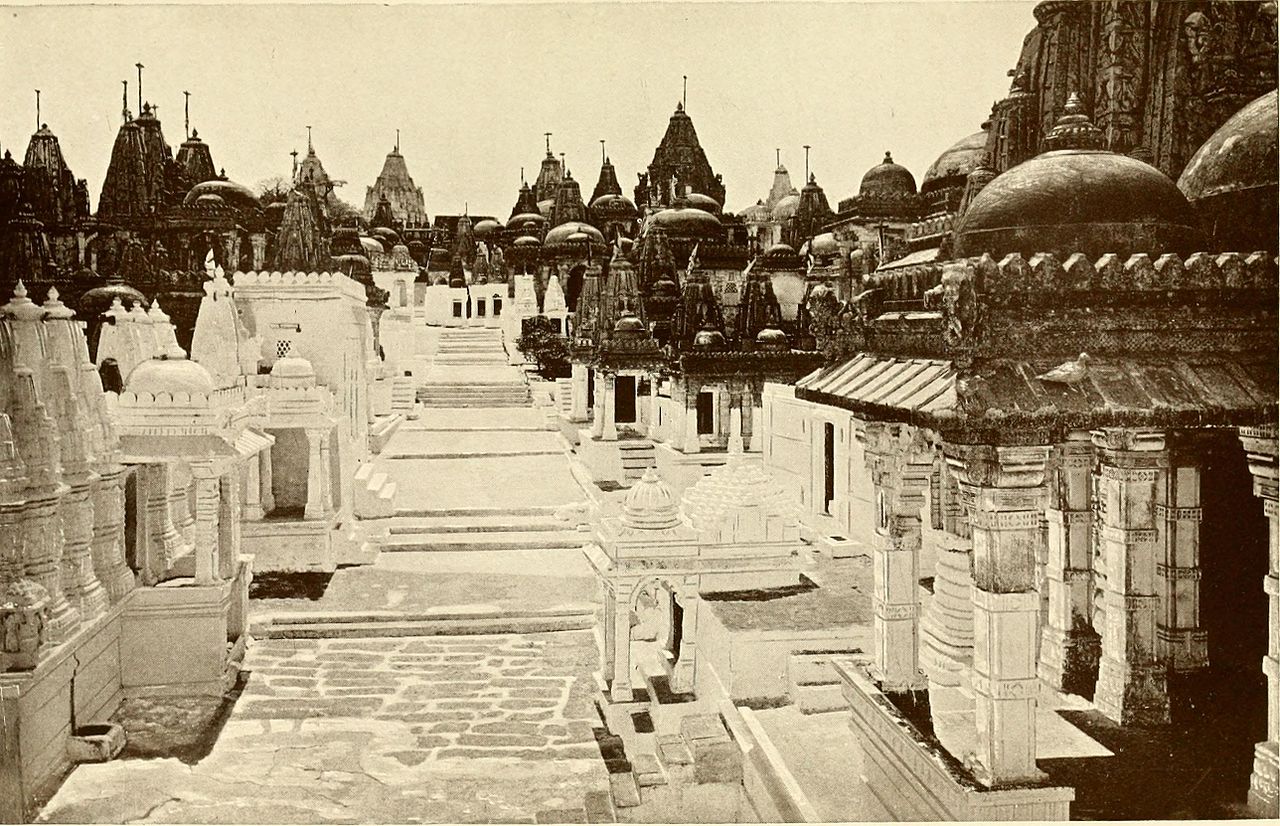
Architectural Relevance of This Shrine
The Palitana temples are considered to be the most sacred tirtha by the Jain community. There are hundreds of temples, with estimates ranging between 863 and 1,008. The larger temples have considerable marble halls with columns and towers, and plenty of openings, unlike Hindu temples. They are situated in separate enclosures, surrounded by high fortified walls. Many of the temples are very small buildings only about 3 square feet, with Jain emblems, and sacred to Mahavira. The marble floors have tesselated patterns. The interiors are intricately carved, with carved ceilings with geometrical lace designs, clustered together to form a canopy. The temples are arranged in systematic groupings with variation in height and space. The buildings are carved in marble and are considered to be prayers in stone. They are grouped in nine separate wings or trucks, each wing having a separate central shrine or temple with minor shrines surrounding it. They have the unique features of the Chaumukh temple which are stated to be their creative preoccupation for large halls for holding discourses. This was prompted by their first tirthanakaras discourse. It is an ensemble involving four sided buildings with doors so that images would be visible from all four sides or directions. The four sides are called the caturbimba, which is considered auspicious from all directions.
Their religious texts also are oriented towards building “cities of temples” like Palitana and Ranakpur, a particular feature in Jainism. The Adinath temple, which venerates Rishabha, is the main temple is decorated with ornamental friezes of dragons. There are stairs from the quadrangle surrounding the temple which leads to a balcony from where one gets a scenic view of the temple complex. There are a series of domes with high spires, 1245 pitchers, 21 images of brightly coloured lions, four yoginis, ten digpals , 72 devkulikas, 32 dolls and 32 toranas.There are three pradakshina routes, followed in a clockwise direction, which are associated with this temple. The first is circular and includes the Sahasrakuta temple, the foot-idols under the Rayan tree, the temple of idols of feet of Ganadhar, and the temple of Simandhar Swami. The second passage passes the new Bhagawan Adishwar temple, Mt. Meru, the temple of Samavasaran temple, and Sammet Shikhar temple.
The third passage passes the Ashtapada temple, the Chaumukh temple. The Adishvara Temple, dated to the 16th century, has an ornamented spire; its main image is that of Rishabha. The Chaumukh temple, built in 1616, has a four-faced Adinatha image deified on a white pedestal, each face turned towards the cardinal directions. Vimal Shah temple is a square structure with towers.Saraswati Devi temple, Narsinh Kesharji temple, and the Samavasaran temple, with 108 life-sketches in sculpture, are also notable. A modern temple, Samvatsarana, was built at the base of the hills of the main temple complex In the shrines, on a pedestal, are large figures of Mahavira, sitting with feet crossed in front, like those of Buddha, often decorated with gems, gold plates, and silver. The Adinath temple has an image 2.16 metres in height of a white-colored idol in the Padmasana posture.
The main iconic image of Adinath, carved in the fine piece of marble, has crystal eyes. Devotees offer flowers and sandal paste to the deity as they approach the statue for worship. The quadrangle opposite in front of the temples is elaborately designed. There is another shrine opposite to Adishwara temple where the Hindu saint Pundrick Swamy lived in the 5th century. After visiting Adishwara, a temple similar in design, Dilwara temple, is located to the right of the steps used for descending from the main shrine, which is also very elegantly designed with the architectural piece in marble. In this temple, Suparswanatha is carved in the centre of a cube-shaped column; Adinatha and Parswanatha adorn the top and bottom of the column. Carvings on the ceiling, floor and the column are very elegantly sculpted. Parswanatha Temple is located in front of this temple.In 2016, a 108 feet idol of Adinath was installed.

By Road
The nearest Bus stop is Palitana.
By Rail
The nearest Railway station is Palitana
By Air
The nearest Airport is Bhavnagar Airport.

Events Celebrated at This Shrine
On one special day, which commonly falls in February/March, thousands of Jain followers visit the temple complex to attain salvation. Three times as many pilgrims come at this time, which is also called 6 Gaon.The special festival day is the Chha Gau Teerth Yatra at the temple complex held on Purnima day of Kartika month according to the Jain calendar, Vira Nirvana Samvat.Jains, in very large numbers, assemble on this day at the temple complex on the hills as it opens after 4 months of closure during the monsoon season. During this pilgrimage, considered a great event in the lifetime of devout Jain, pilgrims circumambulate the Shatunitjaya Hills covering a distance of 21.6 km on foot to offer prayers to Lord Adinatha on the Kartik Poornima Day at the top of the hill. Mahavir Jayanti, the birthday of Mahāvīra, is a notable festival celebrated at the temple complex. A procession carrying images of the tirthankara is made in huge decorated chariots, concurrently accompanied by religious ceremonies in the temples. Rituals include fasting and giving alms to the poor.
Extra Information About this Shrine
Every devout Jain aspires to climb to the top of the mountain at least once in his lifetime because of its sanctity to attain nirvana. The code for the climbers is stringent, in keeping with the rigours of the Jain faith. Food must neither be eaten nor carried on the way. The descent must begin before it is evening, for no soul can remain atop the sacred mountain during the night. The Shatrunjaya hills are considered by many Jains to be more important than the temple covered hills of Jharkhand, Mount Abu and Girnar.



